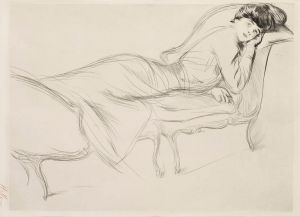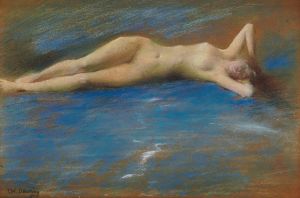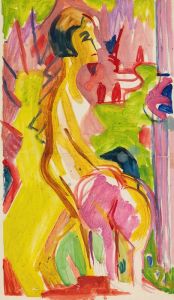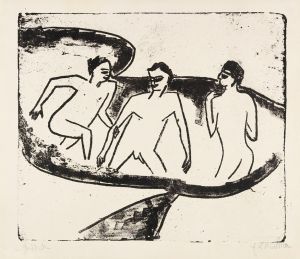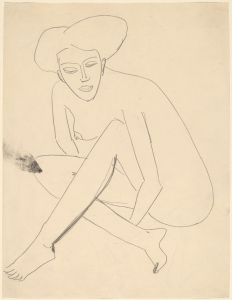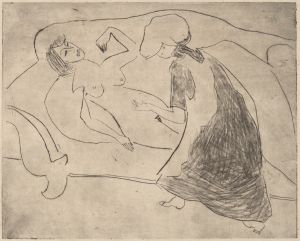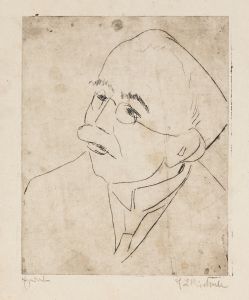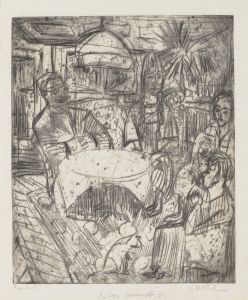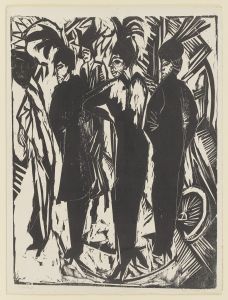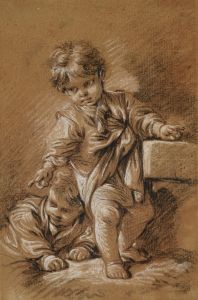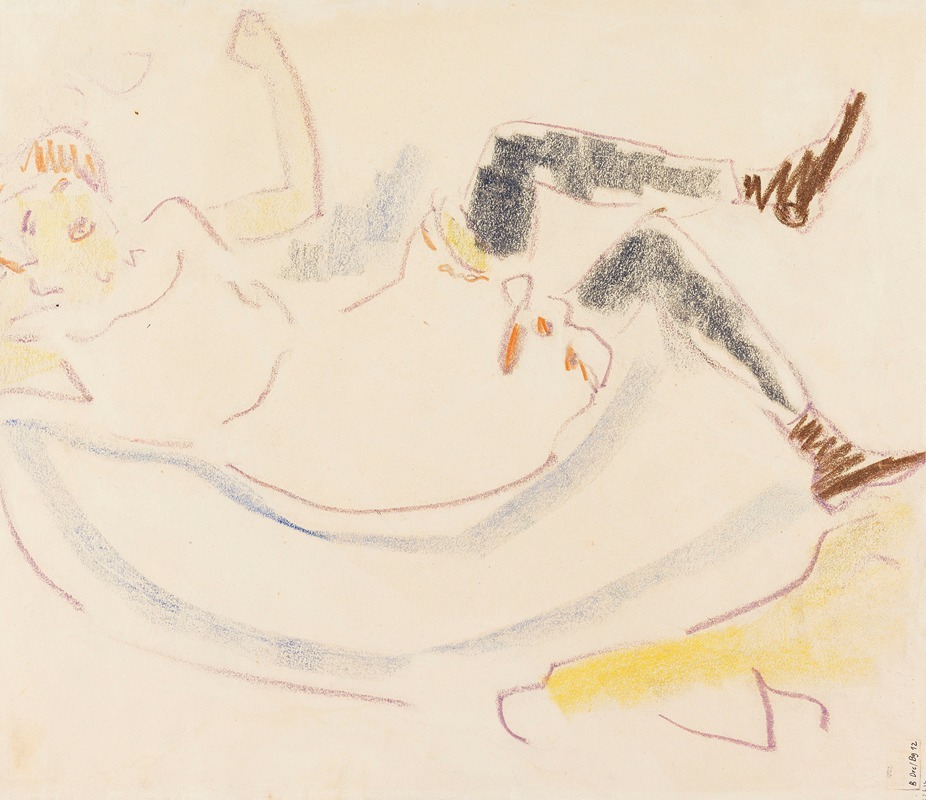
Liegendes Mädchen
A hand-painted replica of Ernst Ludwig Kirchner’s masterpiece Liegendes Mädchen, meticulously crafted by professional artists to capture the true essence of the original. Each piece is created with museum-quality canvas and rare mineral pigments, carefully painted by experienced artists with delicate brushstrokes and rich, layered colors to perfectly recreate the texture of the original artwork. Unlike machine-printed reproductions, this hand-painted version brings the painting to life, infused with the artist’s emotions and skill in every stroke. Whether for personal collection or home decoration, it instantly elevates the artistic atmosphere of any space.
"Liegendes Mädchen" (Reclining Girl) is a painting by the German expressionist artist Ernst Ludwig Kirchner. Kirchner, born on May 6, 1880, in Aschaffenburg, Germany, was a founding member of the influential artist group Die Brücke (The Bridge), which played a crucial role in the development of Expressionism in the early 20th century. His work is characterized by bold colors, dynamic compositions, and a focus on the human figure, often exploring themes of modernity, urban life, and the human condition.
"Liegendes Mädchen" was created in 1910, a period when Kirchner was deeply involved with Die Brücke. The group sought to break away from traditional academic art and embraced a more spontaneous and direct approach to painting. They were inspired by non-Western art forms, such as African and Oceanic art, as well as the works of Vincent van Gogh and Edvard Munch.
The painting depicts a young girl reclining, rendered in Kirchner's distinctive style. The figure is outlined with bold, expressive lines, and the use of vibrant, non-naturalistic colors is evident. This approach reflects Kirchner's interest in conveying emotional intensity and psychological depth rather than adhering to realistic representation. The composition is dynamic, with the girl's body forming a series of angular shapes that create a sense of movement and tension.
Kirchner's choice of subject matter in "Liegendes Mädchen" aligns with his broader artistic interests. He often depicted nudes and scenes of everyday life, aiming to capture the raw, unfiltered essence of his subjects. The reclining pose of the girl in this painting suggests a moment of rest or introspection, inviting viewers to contemplate the inner life of the figure.
The painting also demonstrates Kirchner's mastery of color and form. The background is composed of contrasting hues that enhance the figure's presence and create a vibrant, almost pulsating effect. This use of color is a hallmark of Kirchner's work and contributes to the overall emotional impact of the painting.
Ernst Ludwig Kirchner's career was marked by both critical acclaim and personal struggles. He served in World War I, which had a profound impact on his mental and physical health. After the war, he moved to Switzerland, where he continued to create art but faced ongoing health challenges. Despite these difficulties, Kirchner remained a prolific artist until his death by suicide on June 15, 1938.
"Liegendes Mädchen" is an important example of Kirchner's contribution to the Expressionist movement and his ability to convey complex emotional states through his art. The painting is held in high regard and is part of the collection of the Brücke Museum in Berlin, which houses a significant number of works by Kirchner and other members of Die Brücke.
In summary, "Liegendes Mädchen" by Ernst Ludwig Kirchner is a striking example of German Expressionism, showcasing the artist's innovative use of color, form, and composition to explore the human condition. The painting remains a testament to Kirchner's enduring influence on modern art.







